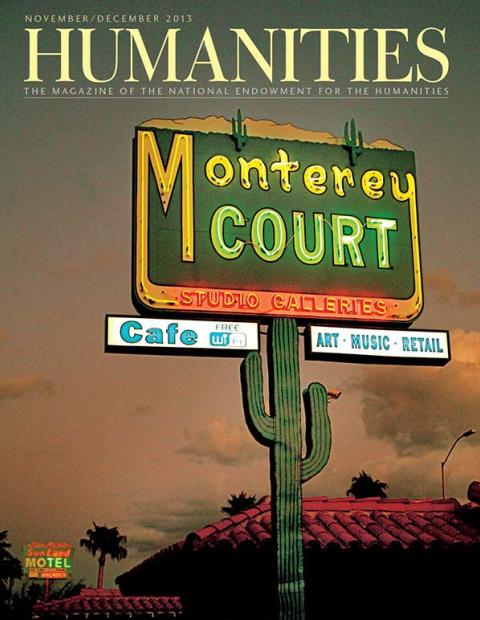For this edition of IQ, we’re delving into family secrets and national politics to explore what it was like to be the daughter of one of the Founding Fathers. Cynthia A. Kierner, professor of history at George Mason University, used an NEH fellowship to write Martha Jefferson Randolph, Daughter of Monticello (University of North Carolina Press, 2012).
Martha was born in 1772. What were the circumstances of the Jefferson family then?
The Jeffersons were second-tier Virginia gentry. They were very prominent in their home county of Albemarle, where Thomas Jefferson owned more land and slaves than anyone else. He also represented his neighbors in the colonial legislature.
How did the American Revolutionary War shape her childhood?
The Jeffersons tried to protect Patsy—as she was known in childhood—and her younger sister during the war. There were shortages of everything from money to meat and a near constant fear of slave uprisings, but Patsy still learned how to read, write, and play music at Monticello. When Jefferson became governor, the family moved to Williamsburg (a very social town) and then to Richmond (decidedly less so). Later, they fled Richmond to escape the invading British, which must have been exciting, but also scary for a young girl.
When Jefferson took a diplomatic post in Paris in 1784, he took Martha with him. Why did he want her along?
They had become very close in their shared grief over the death of her mother two years earlier. He also wanted her to have a better education than she could get if she stayed with her cousins in Virginia.
What was scandalous about her schooling?
I’m not sure that “scandalous” is the right word, but it certainly was odd that Jefferson, who was a republican and a deist, chose to educate his daughter in a French convent that catered to aristocrats. Everyone from his own sister to his friend Abigail Adams worried that a French Catholic education would corrupt this virtuous American Protestant girl.
Did she flounder or flourish in Paris?
She flourished! The time she spent in Paris were the best years of her life. She made friends, became fluent in French, and learned a lot, both academically and socially. She often reminisced about the fun she had and the interesting people she met.
Martha married Thomas Mann Randolph when she was eighteen. What made him a suitable husband?
They actually had a lot in common: deep roots in Virginia, mutual family and friends, and the experience of having been educated in Europe where they experienced life in the wider world. Their social status was pretty much equal. Tom, as the eldest son, stood to inherit much of his father’s vast but financially troubled estate.
Why the urgency to marry?
That’s a tougher question, especially because marriage was a virtually irreversible commitment. It’s clear that Jefferson liked Tom. He was also leaving to serve as Washington’s secretary of state, so perhaps he worried that his departure would either jeopardize Patsy’s relationship with Tom or (conversely) lead to premarital indiscretions. Jefferson also might have seen Tom as someone who could help manage his property while he was away. Some scholars interpret Patsy’s own desire to wed quickly—and her father’s willingness to go along—as an attempt to distance herself from his relationship with Sally Hemings, who by then was visibly pregnant.
Did they have a happy marriage?
Things ended badly: By 1826, Martha was living with her married children in Boston and Washington, while Tom lived alone in Albemarle. But it’s wrong to assume, as some historians do, that their marriage was doomed from the start. They had some happy times and were devoted parents to their eleven (!) children. Tom’s hot temper and financial problems strained their relationship.
When her father became president, Martha spent time in Washington. If we had met her at a party, what kind of impression would she have made?
Everyone who met her said that she was intelligent and incredibly adept at making people feel at ease and welcome. She was a great conversationalist, and she spoke four languages. Even people who hated Jefferson—and there were many—had good things to say about Martha.
Was she a political animal like her father?
She clearly understood politics and played a key role in shaping her father’s public image, both in Washington and later during his retirement at Monticello. But she hated what she called the “violence” of party politics, which was nasty even by our standards.
You mentioned Sally Hemings, the slave with whom Jefferson is thought to have sired six children. What was Martha’s relationship with her?
Of course, that’s the great mystery! As an intelligent woman who lived much of her life under the same roof with Sally Hemings, she must have known about their relationship and she certainly heard the gossip. Sally was one of the servants in Martha’s household, but we know virtually nothing about how they interacted with each other.
What was Jefferson’s view on the role of daughters?
Jefferson was conservative—even reactionary —when it came to women. I think it’s fair to say that he believed that daughters should be dutiful toward their parents—until they married and became dutiful companions to their husbands. In practice, though, he had trouble letting go of his own daughters. Martha, in particular, remained devoted to him after she married, and Jefferson encouraged her devotion, which ultimately contributed to her marital problems.
How did Martha measure up to Jefferson’s idea of what a daughter should be?
Martha was more competent and more assertive than Jefferson’s abstract notion of what a woman should be, but there’s no question that—with the possible exceptions of his wife and Sally Hemings—she was the most important person in his life.



